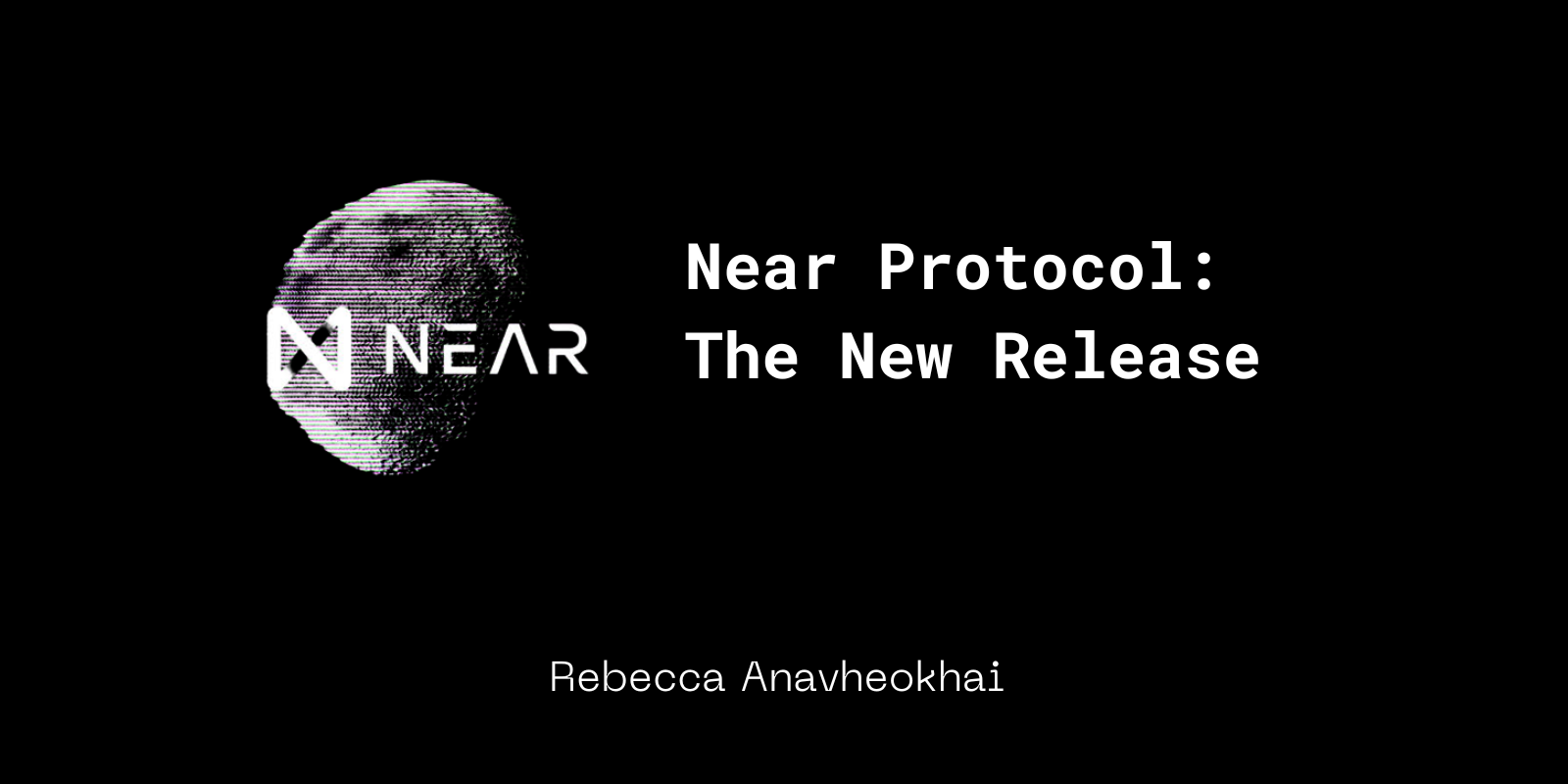Near Protocol's New Release.
 Rebecca Anavheokhai
Rebecca AnavheokhaiTable of contents

The whole hype behind Web3 ended a couple of months ago, so superficial Web3 lovers have come and gone but most definitely not the real ones like us that are still very much in the loop. Since we can't possibly know everything I'm going to tell you about a fun new release, try to keep up.
Before talking about the new release, I believe it's only proper to talk about Near Protocol a little bit.
The Near Protocol.
Near protocol is a decentralized blochchain platform that was designed to be fast, secure, and developer-friendly. The platform aims to provide an efficient and scalable infrastructure for the creation and deployment of decentralized applications (dApps) and other blockchain-based solutions. Its NEAR tokens are used to pay for transaction fees and storage on the Near crypto platform. Near is a proof-of-stake blockchain that uses sharding, which allows for high throughput and low latency, and is also designed to be compatible with existing Ethereum tools and libraries.
The Near Protocol was founded by Alexander Skidanov, Illia Polosukhin, and Evgeny Kuzyakov in 2018. The team is composed of experienced blockchain developers and industry experts with a mission to enable the creation of open, borderless economies and to make blockchain technology accessible to everyone.
The New Release.
Near protocol released a new blockchain operating system for Web3 which was announced at the ETHDenver industry conference by Near's co-founder, Illia Polosukhin.
The platform is intended to act as a common layer for browsing and discovering Web3 products including crypto exchanges, non-fungible token (NFT) galleries and social networks. The framework is said by Polosukhin, to be compatible with all blockchains (currently supporting Near Protocol and Ethereum Virtual Machine chains) and Near will act as a common entry point. The Near team claims that their new system is compatible with any Web2 or Web3 backend and wallet, which means that users can use a single app seamlessly, even when switching between different applications.
The new system also provides developers with the ability to create decentralized and composable frontends. It allows developers to combine different pieces and components with built-ins such as payments, profiles, and notifications, without needing to host them on a separate server.
It was also mentioned that the new blockchain operating system provides a platform for developers to showcase their apps to a large audience of users, similar to how iOS provides a platform for app developers.
Polosukhin added the platform is hoping to tackle some of the user experience issues in the Web3 space. "As a user at the moment it is hard to find a single place to look at Web3 apps, there's no search mechanism or a way to navigate between them", said Polosukhin.
Features of The Release.
Like I mentioned above, one of the features of the Near Protocol is its scalability and this is also a key feature of the Near Protocol. The platform uses sharding to divide the network into smaller, more manageable parts, each capable of processing transactions in parallel. This allows the network to handle a large volume of transactions and improves overall throughput and latency. Additionally, the platform uses a consensus mechanism called Proof-of-Stake (PoS), which is more energy-efficient than traditional Proof-of-Work (PoW) mechanisms used by many other blockchain platforms.
Another important feature of the Near Protocol is its developer-friendly approach. The platform is designed to be easy to use and integrate with existing tools and libraries, making it accessible to developers with different levels of experience. It supports multiple programming languages, including Rust and AssemblyScript, and offers a range of development tools and frameworks, such as the NEAR SDK, which simplifies the creation and deployment of dApps.
The Near Protocol is also focused on security. The platform uses a layered security model, which includes secure hardware and software components to protect against attacks and ensure the integrity of the network. The platform also has a bug bounty program that incentivizes researchers to find and report security vulnerabilities, which helps to improve the overall security of the network.
The Near Protocol also offers a unique approach to user experience. The platform aims to make it easier for users to interact with dApps by eliminating the need for complex cryptographic addresses and private keys. Instead, users can create a human-readable account name, such as “alice.near,” which they can use to interact with any dApp on the platform. This simplifies the user experience and makes it more accessible to a wider range of people.
In summary, the Near Protocol is a promising blockchain platform that aims to provide a scalable and developer-friendly infrastructure for the creation and deployment of dApps and other blockchain-based solutions. Its use of sharding, PoS consensus mechanism, and developer tools make it an attractive option for developers looking to build on a fast and secure blockchain platform. Additionally, its focus on user experience and security ensures that it is accessible to a wider range of users and provides a robust and trustworthy platform for blockchain-based solutions.
Subscribe to my newsletter
Read articles from Rebecca Anavheokhai directly inside your inbox. Subscribe to the newsletter, and don't miss out.
Written by
